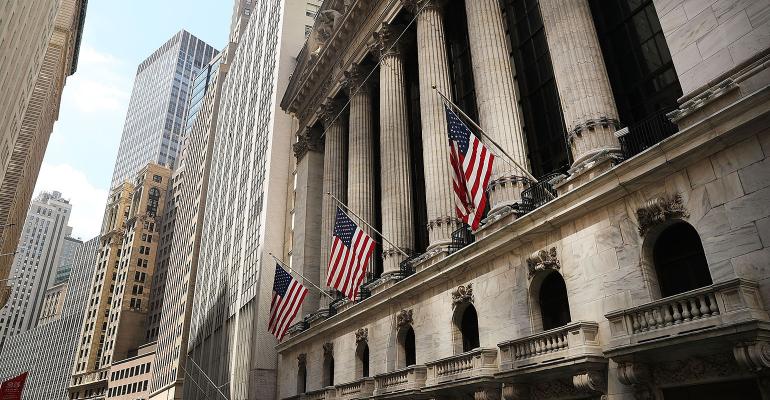By Carolina Wilson and Vildana Hajric
(Bloomberg) -- The largest exchange-traded fund designed to buy high-flying stocks seems to have lost its edge.
The $8.6 billion iShares Edge MSCI USA Momentum ETF, or MTUM, has trailed the S&P 500 Index by almost 4 percentage points since the beginning of January, putting the fund on track for its worst start to the year since it started trading in 2013, data compiled by Bloomberg show.
It’s all down to a quirky rule that dictates when the fund tweaks its holdings. MTUM overhauled its portfolio at the end of January, after the MSCI Inc. index it tracks undertook a so-called ad-hoc rebalancing to deal with a spike in volatility. This move -- stipulated in an appendix of the benchmark’s methodology -- bolstered defensive holdings, just as their performance peaked, according to Bloomberg Intelligence analysts Athanasios Psarofagis and Peter Chung.
“If the market kept going down then being more defensive was a great trade, but it’s the opposite if the market recovers sharply like it did,” Psarofagis said in an interview. From a performance perspective “it would have been better off not doing anything,” he said. MTUM would be ahead of the S&P 500 by 3.6 percentage points this year if it had stayed pat, he wrote in a note on April 26.
The rebalance cut MTUM’s combined exposure to the technology and communications sectors to 20 percent from 46 percent, while its health-care allocation jumped to 32 percent from 9 percent, Psarofagis wrote. Health-care stocks have since plunged, becoming the worst-performing S&P sector this year, while tech has outperformed every other industry.
[etf fund:MTUM]
Media representatives for BlackRock Inc., which runs MTUM, and MSCI were not immediately able to comment.
Momentum strategies seek to follow the herd -- betting that stocks that are rising keep going up, while those that are falling continue to slide. It’s become an increasingly popular style as investors look to gain an edge amid the longest bull market in history, and ETFs with this approach have grown to $12.7 billion in the U.S., more than doubling over the last three years, data compiled by Bloomberg Intelligence show.
Despite its early associations with tech and growth, which have propelled the rally, MTUM is “the shape-shifting actor,” making adjustments to hold whatever’s working, according to Dave Mazza, head of ETF product at Direxion Investments.
“You’re at the mercy of timing, especially when additional rules are present like what was experienced in January,” Mazza said. “The benefits of factor investing are strong, but investors need to understand the methodology because that will ultimately drive returns just like an active manager’s decision will drive active returns.”
MTUM has seen more than $500 million of outflows this year, data compiled by Bloomberg show. The silver lining for investors sticking with the fund is that its underperformance may not last; the fund is set to rebalance again on May 31.
With the $18 billion Health Care Select Sector SPDR ETF floating below its 200-day moving average, health-care stocks may get the boot, while utilities could benefit as the sector hits new highs.





